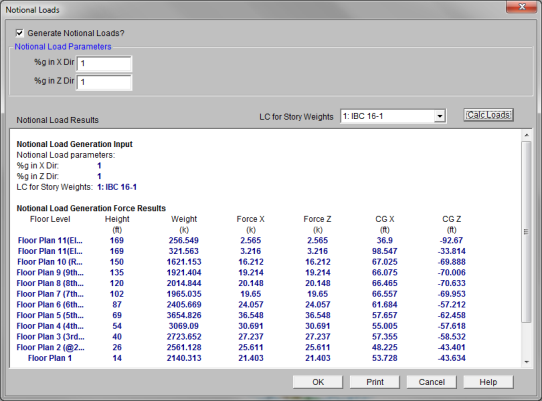
Notional Loads are used by some building codes for the stability design of a structure. They serve as a minimum lateral load, or as an alternative to modeling the actual out-of-plumbness or out-of-straightness of the structure. Instead of changing the geometry of the structure, an equivalent de-stabilizing load is added to the structure. There are numerical benefits to handling this out-of-plumbness issue with loads rather than geometry. Essentially, it is quicker and easier to adjust the loading on a structure than it is to modify the stiffness matrix of the structure.
The implementation of these notional loads is not based on a single code, but on the concept of using lateral forces equal to a percentage of the applied vertical load at each floor level. Codes that may require the use of notional loads include the following:
These notional loads are normally only assumed to act for load cases which do not include other lateral forces. However, the specific requirements of the individual code may require the use of these loads for other load cases depending on the sensitivity of the structure to stability effects.
Notional loads can only be automatically generated for diaphragm/floor levels. The program will automatically calculate the center of mass and use that point as the location to apply the Notional Loads.
Note
For additional advice on this topic, please see the RISA Tips & Tricks webpage at risa.com/post/support. Type in Search keywords: Notional Loads.
The Weight of each
The notional load dialog only asks for a load combination and the % of gravity loads that should be applied in the lateral direction. Notional loads are only generated for a single load combination. Therefore, the user is encouraged to choose a load combination which includes the most severe loading.

This section displays all the relevant design data entered so that it can be included on a print out with the Notional Load results.
This section displays all important calculated information such as the Weight associated for each floor level, the Center of Gravity location for this weight and the notional load applied to each diaphragm or floor level.
Note